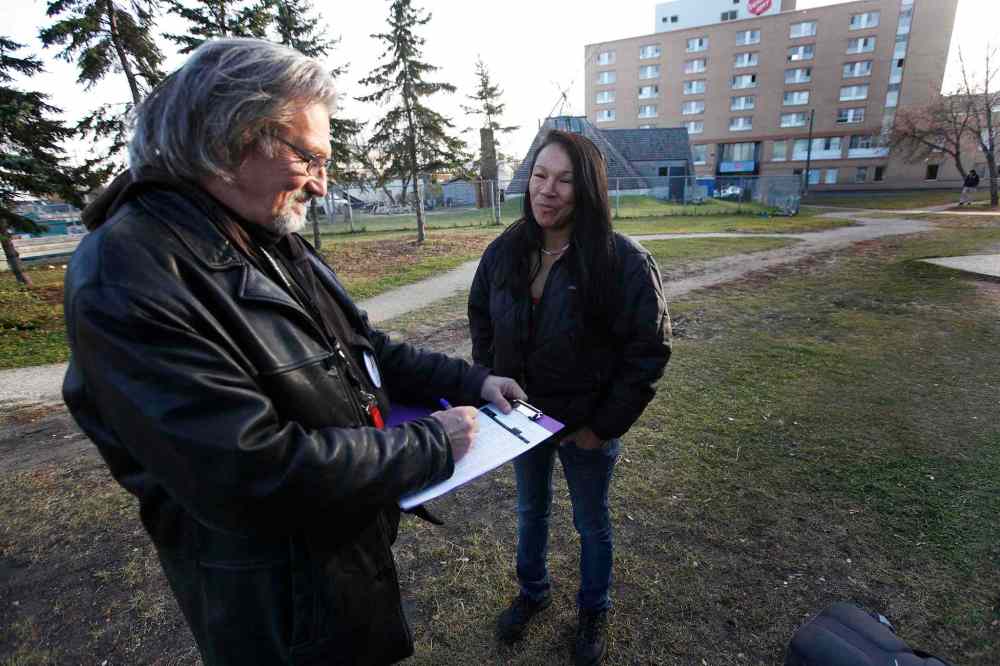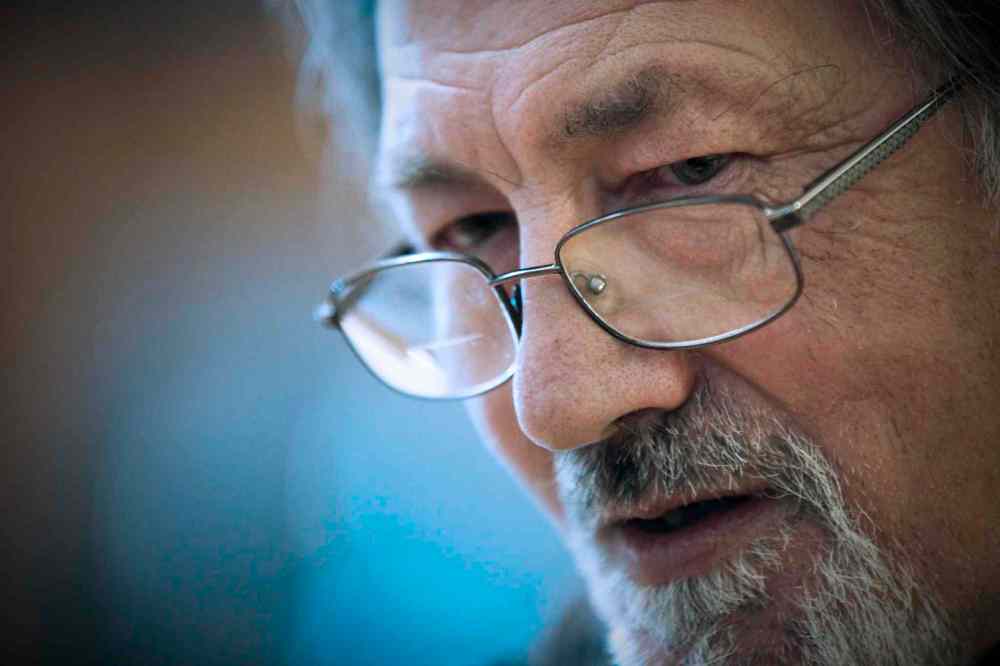Counting the invisible: Face-to-face census attempts to uncover the city’s hidden homeless
Advertisement
Read this article for free:
or
Already have an account? Log in here »
To continue reading, please subscribe:
Monthly Digital Subscription
$0 for the first 4 weeks*
- Enjoy unlimited reading on winnipegfreepress.com
- Read the E-Edition, our digital replica newspaper
- Access News Break, our award-winning app
- Play interactive puzzles
*No charge for 4 weeks then price increases to the regular rate of $19.00 plus GST every four weeks. Offer available to new and qualified returning subscribers only. Cancel any time.
Monthly Digital Subscription
$4.75/week*
- Enjoy unlimited reading on winnipegfreepress.com
- Read the E-Edition, our digital replica newspaper
- Access News Break, our award-winning app
- Play interactive puzzles
*Billed as $19 plus GST every four weeks. Cancel any time.
To continue reading, please subscribe:
Add Free Press access to your Brandon Sun subscription for only an additional
$1 for the first 4 weeks*
*Your next subscription payment will increase by $1.00 and you will be charged $16.99 plus GST for four weeks. After four weeks, your payment will increase to $23.99 plus GST every four weeks.
Read unlimited articles for free today:
or
Already have an account? Log in here »
Hey there, time traveller!
This article was published 26/10/2015 (3690 days ago), so information in it may no longer be current.
Not long ago, Al Wiebe was one of Winnipeg’s hidden homeless.
Now he’s on the front line leading the charge for change in how those who have no permanent roof over their heads are perceived by the public, how they are treated by those in authority and their access to services that could save their lives.
Wiebe, 61, is one of about 300 volunteers who hit the streets of Winnipeg on Monday night in the final phase of the Winnipeg Street Census 2015. Volunteers walked 27 separate routes through the core area with the goal of talking to every person living on the street that they could.
“It takes a long time to make it back when you are on the street. You’re totally isolated,” said Wiebe, who was saved by the kindness of a stranger, a nurse at the St. Boniface Hospital. “A nurse came in and she saved my life, without a doubt.”
He’d already been turned away three times at the Health Sciences Centre emergency — he said no one took the time to talk to him and find out he was in crisis and suffering from a mental illness — and survived a suicide attempt when he jumped into the Assiniboine River.
“She said they didn’t help you but I’m going to help you today. You’ve lost your identity and it’s like you’ve fallen off the edge of the world but we’re going to pull you back in. I’ll never forget that. She did the motion like she was pulling in a rope,” he said, noting the date was on Sept. 5, 2010. So was his distress he doesn’t remember the nurse’s name, but he has reached out to St. Boniface Hospital to try to find her. “She was beautiful but the beauty was in her heart, too.”
The street census is called a point-in-time count. To access the former Conservative government’s new $600-million round of homelessness funding, cities across Canada must conduct each conduct counts as best they can to get a better snapshot of the homeless population. The count is also a key first step recommended by the city’s new 10-year plan to end homelessness, unveiled in April 2014.
That plan pegged the number of people experiencing homelessness at 2,750.
The census began Sunday at downtown shelters where volunteers surveyed as many people as would speak with them. The process continued during the day Monday at 40 locations across the inner city, where those who are homeless are known to go — soup kitchens, ministries, libraries and drop-ins. It concluded Monday evening when volunteers hit the streets.
“I hope that (the census) raises awareness and that Winnipeggers start to question, even if there’s one person on the streets, does that really have to happen?” said Christina Maes Nino, a policy expert with the Social Planning Council of Winnipeg and one of the street census’s organizers. “I hope it causes people to say how can I be part of the solution and start talking with friends and neighbours about doing something to address the root causes of homelessness. People need homes, support and incomes.”

She said the results of the Street Census will be available in about a month, but organizers know any final count will be an underestimate. Learning to be invisible is a survival strategy for the homeless.
“We’re never going to find everyone. Like me. They would never have found me. I was in car at McPhillips and William,” Wiebe said, noting the car, a Mercedes similar to one he used to have before he lost his job in advertising sales, was where he stayed for 8 1/2 months.
“The weird thing about this was I knew where I was headed but I couldn’t do anything about it. I thought that my existence was not going to be very long and that I’d probably end up dying on the street.”
The staff at St. Boniface found Wiebe a bed a Victoria Hospital, where he stayed for a few weeks
These days, the well-spoken Wiebe is speaking up for those who cannot and seeking ways to shelter those who have none. Now a part-time community liaison co-ordinator with the University of Winnipeg’s Institute of Urban Studies, he’ll be a speaker in spring 2016 at a conference for triage and emergency workers. He’s already made a presentation to senior Winnipeg Regional Health Authority executives about what front-line workers can do better to help the homeless.
“We’re going to do our best. It’s not going to help anyone today but down the road, within six months, things will start coming together and we can give an informed number to the government to get funding to help change things,” Wiebe said.
He said the pain of being shunned when he did reach out for help was worse than trying to survive on the streets.
“The problem when you are on the street, you have no self-esteem. People kept telling me I had to ‘work on things.’ I still have absolutely no idea what that means. Work on what? I was staying in a car and I had nothing in my pocket but sand,” he said.
“A lot of homelessness is caused by trauma. Even now, I’m always afraid of it (homelessness). That trauma never leaves you.”




